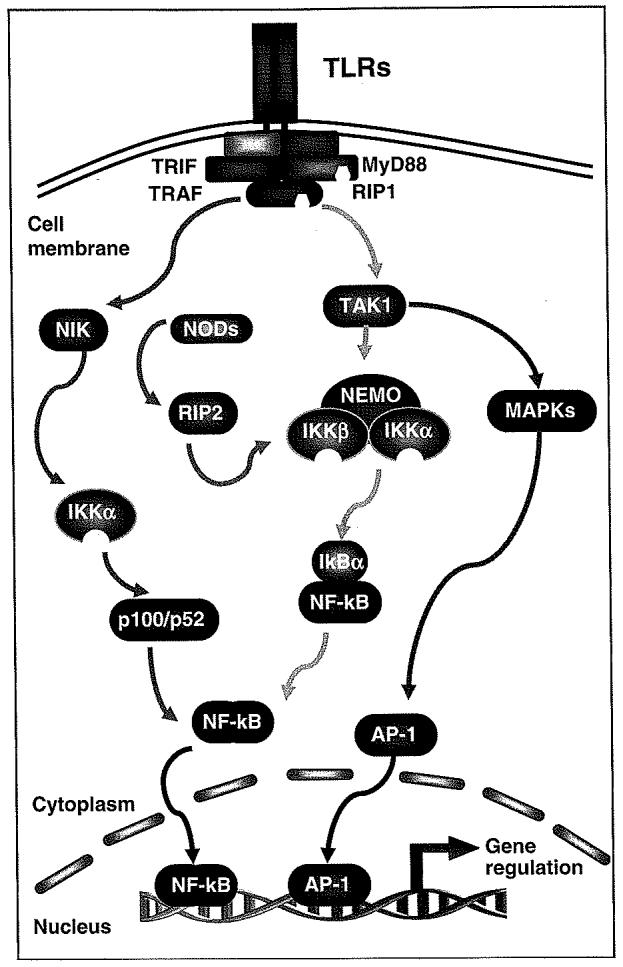Figure 2.

TLRs/NODs and key intracellular signaling cascades. TLRs recognize distinct pathogen patterns and recruit a set of adaptor proteins to form the signalosome complex. Following receptor ligation and recruitment of receptor adaptor proteins, signaling to IKK proceeds through TRAF/RIP complexes, generally in conjunction with TAK1, leading to canonical NF-κB signaling, or through TRAFs and NIK leading to the noncanonical NF-κB pathway. NODs recognize intracellular pathogen molecules and recruit RIP2 to activate NF-κB. Activation of IKK results in IκB phosphorylation and degradation in the canonical pathway or p100 processing to p52 in the noncanonical pathway and consequently, nuclear translocation of phophorylated NF-κB dimers. Those NF-κB dimmers bind to κB DNA elements and regulate gene expression. TAK1 can also trigger activation of MAPKs leading to the activator protein-1-associated gene regulation. AP-1, activator protein-1; IκB, inhibitory protein kappaB; IKK, inhibitor of kappaB kinase; NF-κB, nuclear-factor κB; NIK, NF-kappaB-inducing kinase; NODs, nucleotide-binding oligomerization domain proteins; RIP, receptor-interacting protein; TAK, transforming growth factor-beta-activated kinase; TLRs, Toll-like receptors; TRAF, TNFR-associated factor; TRIF, Toll/interlukin-1 receptor domain-containing adaptor molecule-1.
